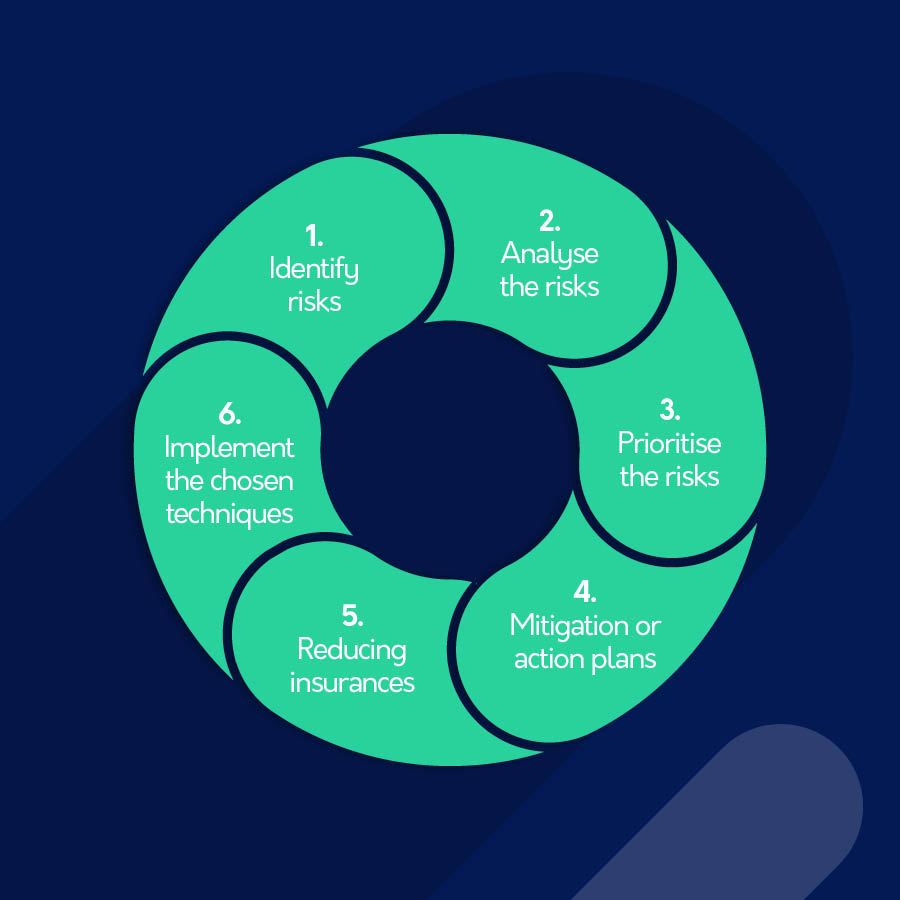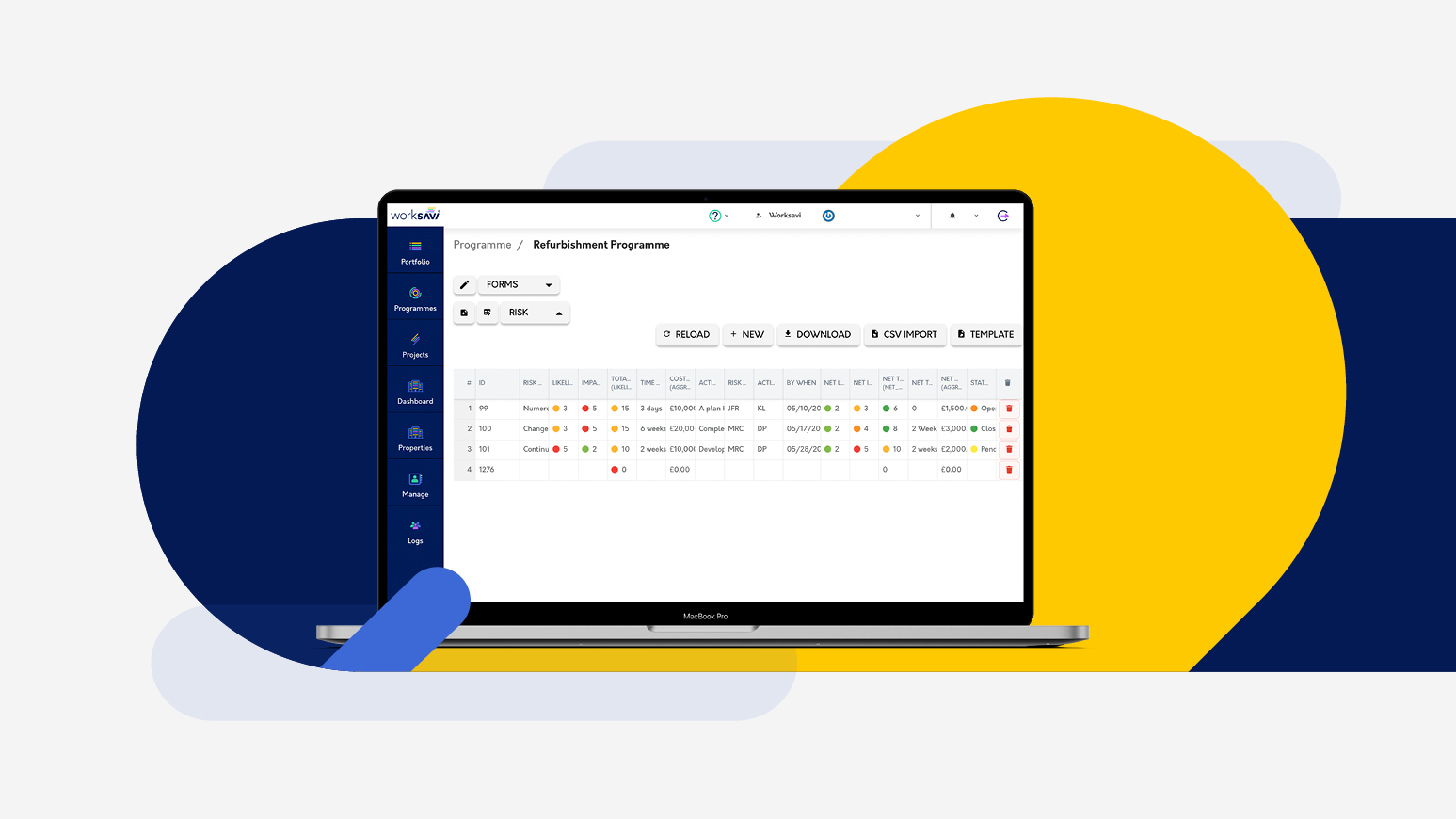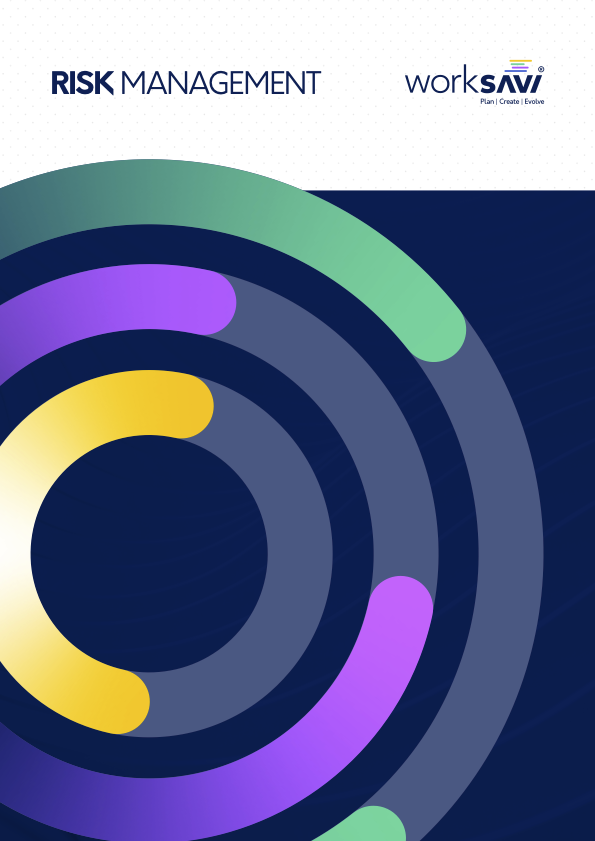Why Manage Risk?

By implementing a risk management plan and considering the various potential risks or events before they occur, organisations can save money and protect their future. A robust risk management plan will help a company establish procedures to avoid potential threats, minimise their impact should they occur and cope with the results. This ability to understand and control risk enables them to be more confident in their business decisions.
Risk Management Process
All risk management processes follow similar basic steps. Combined together, these steps deliver a simple and effective risk management process.

Identify risks
Use a risk register to capture risks – listing each risk with a description, stating who is responsible, the probability of it occurring, the impact should it occur and the mitigating actions that could be undertaken. WorkSavi’s Risk register is fully configurable by the user so that it can be aligned to the risk management approach for every project and business.

Analysing the risks
The usual options to mitigate risks that are threats (rather than opportunities) are:
- Accept
- Avoid
- Transfer
- Minimise
Prioritise the risks
To prioritise effectively you need to understand what factors could make the risk more likely to occur and what impact that would have on cost, timescale and scope/quality of the final deliverable. WorkSavi supports all risk matrices, typically we see 3×3, 4×4 or 5×5 risk matrices. Some risks may be very likely to occur but have low impact; others may be less likely to occur but have a major impact, so the overall priority needs to take this into account.
When prioritising the risks, the extent can be expressed as follows:

Probability is the likelihood of an event occurring, and impact is the extent and cost of the resulting loss.
Mitigation / action plans
For each identified risk firstly decide what could be done to minimise the chance of it occurring, or if different methods can be adopted to avoid the risk altogether. Secondly, what action could be taken if the risk does occur. You will then be better prepared to deal with it if necessary. In WorkSavi, a cost and time impact can be attributed to all risks along with the actions and mitigations planned to reduce the impact.
Plan actions and monitor responses to those risks
Finally make sure the responses are implemented. If the risk mitigation measures are not followed through the risk management process will add little or no value overall.
The WorkSavi Risk Report will provide a better understanding of the actions adopted to close out some of the more challenging and complex issues the business has experienced. Capturing this learning will allow refinement and improvement of the risk management processes and strategy for future projects. Constantly learning, constantly evolving.



